Washington (CNN) -- It was just a few words and a joke at that. But Supreme Court Justice Clarence Thomas broke his seven-year long silence on Monday when he spoke at oral arguments.
He made fun of lawyers from Yale, his law school alma mater.
Thomas has become known for rarely commenting on cases from the bench, another reflection of the complex and often misunderstood personality of the court's only African-American jurist.
On Monday, the justices were hearing an argument about the state of Louisiana's delay in paying for counsel for a death penalty defendant. Should that count against the state for the purposes of the right to a speedy trial?
A lawyer for the state was making the case for the inmate's appointed counsel, saying the woman was "more than qualified" and "very impressive."
"She was graduate of Yale Law School, wasn't she?" said Justice Antonin Scalia in apparent support, noting another member of the legal team went to Harvard.
The next words were hard to hear in the back-and-forth between the justices. But Thomas made a joke about the competence of Yale lawyers when compared to their Harvard colleagues, according to two witnesses.
.cnnArticleGalleryNav{border:1px solid #000;cursor:pointer;float:left;height:25px;text-align:center;width:25px} .cnnArticleGalleryNavOn{background-color:#C03;border:1px solid #000;float:left;height:25px;text-align:center;width:20px} .cnnArticleGalleryNavDisabled{background-color:#222;border:1px solid #000;color:#666;float:left;height:25px;text-align:center;width:25px} .cnnArticleExpandableTarget{background-color:#000;display:none;position:absolute} .cnnArticlePhotoContainer{height:122px;width:214px} .cnnArticleBoxImage{cursor:pointer;height:122px;padding-top:0;width:214px} .cnnArticleGalleryCaptionControl{background-color:#000;color:#FFF} .cnnArticleGalleryCaptionControlText{cursor:pointer;float:right;font-size:10px;padding:3px 10px 3px 3px} .cnnArticleGalleryPhotoContainer cite{background:none repeat scroll 0 0 #000;bottom:48px;color:#FFF;height:auto;left:420px;opacity:.7;position:absolute;width:200px;padding:10px} .cnnArticleGalleryClose{background-color:#fff;display:block;text-align:right} .cnnArticleGalleryCloseButton{cursor:pointer} .cnnArticleGalleryNavPrevNext span{background-color:#444;color:#CCC;cursor:pointer;float:left;height:23px;text-align:center;width:26px;padding:4px 0 0} .cnnArticleGalleryNavPrevNextDisabled span{background-color:#444;color:#666;float:left;height:23px;text-align:center;width:25px;padding:4px 0 0} .cnnVerticalGalleryPhoto{padding-right:68px;width:270px;margin:0 auto} .cnnGalleryContainer{float:left;clear:left;margin:0 0 20px;padding:0 0 0 10px}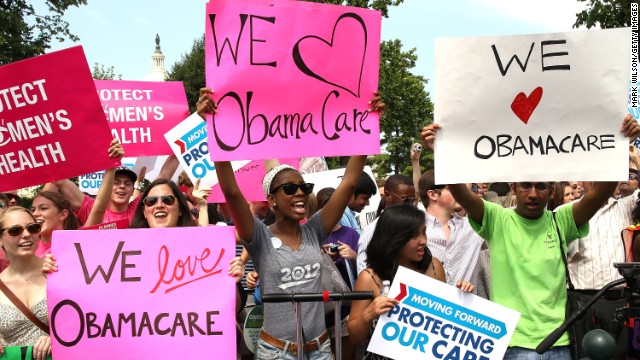 The Supreme Court upheld most of the Affordable Care Act, the Obama administration's health care reform law, on June 28, 2012. The decision could determine how hundreds of millions of Americans receive health care in the future. Here's a look at other landmark Supreme Court cases. Activists rally in February 2012 to urge the Supreme Court to overturn its decision that fundamentally changed campaign finance law by allowing corporations and unions to contribute unlimited funds to political action committees not affiliated with a candidate. Gregory Lee Johnson lights a flag on fire to protest the Reagan administration and some Dallas-based corporations. Johnson was convicted of desecrating a venerated object but the court overturned the verdict on First Amendment grounds. President Richard Nixon claimed executive privilege over taped conversations regarding the Watergate break-in in an attempt to keep the tapes out of a congressional investigation. The Supreme Court ruled that executive privilege is not ironclad. Wanda McCorvey, identified as "Jane Roe" sued the Dallas County, Texas, District Attorney Henry Wade over a law that made it a felony for her to have an abortion unless her life was in danger, citing her personal liberty. The court agreed with Roe and overruled any laws that made abortion illegal in the first trimester. Ernesto Miranda confessed to a crime without the police informing him of his right to an attorney or right against self-incrimination. His attorney argued in court that the confession should have been inadmissible because police did not properly inform him of that right. The court agreed and the "Miranda Rights" got their name. In 1961, Clarence Earl Gideon was convicted of burglary after he was denied the right to an attorney by a Florida court. Convinced that Constitution guaranteed him the right to an attorney, he wrote a note from his prison cell to the Supreme Court, which unanimously overturned the verdict. Dollree Mapp was arrested under an Ohio law for possession of obscene materials after police entered her home waving a piece of paper and calling it a warrant. The Court ruled that states could not violate the Fourth Amendment right to reasonable search and seizure, which rendered evidence gained that way inadmissible. Nathaniel Steward, 17, recites his lesson surrounded by white classmates at the Saint-Dominique School, in Washington, the first school in which the Supreme Court ruling banning school segregation was applied. Fred Korematsu, a Japanese-American man, was arrested after authorities found out he claimed to be a Mexican-American to avoid being imprisoned in an interment camp during World War II. The court ruled that the rights of individuals were not as important as the need to protect the country during wartime. Homer Plessy, who was of mixed descent, said because he was 7/8 white and 1/8 black, he should be alowed to ride the whites-only car on a segregated railway in Louisiana. The court upheld a 1890 state statute requiring railway cars provide separate but equal accomodations. The front page of 'Frank Leslie's Illustrated Newspaper' reports the Dred Scott case, in which the court ruled that a slave could not gain his freedom by entering a state in which slavery was outlawed. The decision inflamed anti-slavery sentiment in the North. Gibbons v. Ogden was the first case to establish Congress' power to regulate interstate commerce. The ruling signaled a shift in power from the states to the federal government and was later used as part of the basis of the Civil Rights Act of 1964. In response to the federal government's controversial decision to institute a national bank, Maryland tried to tax the bank out of business. A customer sued Maryland and the court ruled that the implied powers in the Constitution allowed the federal government to create a national bank and that national supremacy made Maryland's actions unconstitutional. Outgoing President John Adams tried to appoint a number of Federalist loyalists to to judicial positions but some of the appointments had not been delivered by the time Thomas Jefferson took office. Jefferson instructed his Secretary of State James Madison (pictured) to stop delivery on the appoinments, including that of William Marbury, who sued. The court's ruling established the principal of judicial review -- the court's ability to rule on a law's constitutionality. Independent Business v. Sebelius (2012) Citizens United v. Election Commission (2010) Texas v. Johnson (1989) United States v. Nixon (1974) Roe v. Wade (1973) Miranda v. Arizona (1966) Gideon v. Wainwright (1963) Mapp v. Ohio (1961) Brown v. Board of Education (1954) Korematsu v. United States (1944) Plessy v. Ferguson (1896) Dred Scott v. Sanford (1857) Gibbons v. Ogden (1824) McColloch v. Maryland (1819) Marbury v. Madison (1803) HIDE CAPTION << <
The Supreme Court upheld most of the Affordable Care Act, the Obama administration's health care reform law, on June 28, 2012. The decision could determine how hundreds of millions of Americans receive health care in the future. Here's a look at other landmark Supreme Court cases. Activists rally in February 2012 to urge the Supreme Court to overturn its decision that fundamentally changed campaign finance law by allowing corporations and unions to contribute unlimited funds to political action committees not affiliated with a candidate. Gregory Lee Johnson lights a flag on fire to protest the Reagan administration and some Dallas-based corporations. Johnson was convicted of desecrating a venerated object but the court overturned the verdict on First Amendment grounds. President Richard Nixon claimed executive privilege over taped conversations regarding the Watergate break-in in an attempt to keep the tapes out of a congressional investigation. The Supreme Court ruled that executive privilege is not ironclad. Wanda McCorvey, identified as "Jane Roe" sued the Dallas County, Texas, District Attorney Henry Wade over a law that made it a felony for her to have an abortion unless her life was in danger, citing her personal liberty. The court agreed with Roe and overruled any laws that made abortion illegal in the first trimester. Ernesto Miranda confessed to a crime without the police informing him of his right to an attorney or right against self-incrimination. His attorney argued in court that the confession should have been inadmissible because police did not properly inform him of that right. The court agreed and the "Miranda Rights" got their name. In 1961, Clarence Earl Gideon was convicted of burglary after he was denied the right to an attorney by a Florida court. Convinced that Constitution guaranteed him the right to an attorney, he wrote a note from his prison cell to the Supreme Court, which unanimously overturned the verdict. Dollree Mapp was arrested under an Ohio law for possession of obscene materials after police entered her home waving a piece of paper and calling it a warrant. The Court ruled that states could not violate the Fourth Amendment right to reasonable search and seizure, which rendered evidence gained that way inadmissible. Nathaniel Steward, 17, recites his lesson surrounded by white classmates at the Saint-Dominique School, in Washington, the first school in which the Supreme Court ruling banning school segregation was applied. Fred Korematsu, a Japanese-American man, was arrested after authorities found out he claimed to be a Mexican-American to avoid being imprisoned in an interment camp during World War II. The court ruled that the rights of individuals were not as important as the need to protect the country during wartime. Homer Plessy, who was of mixed descent, said because he was 7/8 white and 1/8 black, he should be alowed to ride the whites-only car on a segregated railway in Louisiana. The court upheld a 1890 state statute requiring railway cars provide separate but equal accomodations. The front page of 'Frank Leslie's Illustrated Newspaper' reports the Dred Scott case, in which the court ruled that a slave could not gain his freedom by entering a state in which slavery was outlawed. The decision inflamed anti-slavery sentiment in the North. Gibbons v. Ogden was the first case to establish Congress' power to regulate interstate commerce. The ruling signaled a shift in power from the states to the federal government and was later used as part of the basis of the Civil Rights Act of 1964. In response to the federal government's controversial decision to institute a national bank, Maryland tried to tax the bank out of business. A customer sued Maryland and the court ruled that the implied powers in the Constitution allowed the federal government to create a national bank and that national supremacy made Maryland's actions unconstitutional. Outgoing President John Adams tried to appoint a number of Federalist loyalists to to judicial positions but some of the appointments had not been delivered by the time Thomas Jefferson took office. Jefferson instructed his Secretary of State James Madison (pictured) to stop delivery on the appoinments, including that of William Marbury, who sued. The court's ruling established the principal of judicial review -- the court's ability to rule on a law's constitutionality. Independent Business v. Sebelius (2012) Citizens United v. Election Commission (2010) Texas v. Johnson (1989) United States v. Nixon (1974) Roe v. Wade (1973) Miranda v. Arizona (1966) Gideon v. Wainwright (1963) Mapp v. Ohio (1961) Brown v. Board of Education (1954) Korematsu v. United States (1944) Plessy v. Ferguson (1896) Dred Scott v. Sanford (1857) Gibbons v. Ogden (1824) McColloch v. Maryland (1819) Marbury v. Madison (1803) HIDE CAPTION << <  1
1  2
2  3
3  4
4  5
5  6
6  7
7  8
8  9
9  10
10  11
11  12
12  13
13  14
14  15 > >>
15 > >>  Cases that changed America
Cases that changed America Six members of the current high court attended Harvard Law School. Thomas, Samuel Alito and Sonia Sotomayor attend Yale.
Sotomayor describes life journey in new memoir
The official transcript released by the court does not capture the flavor of the colorful exchange. But the lawyer arguing before the court was apparently not pleased.
"I would refute that, Justice Thomas," said Carla Sigler, the assistant district attorney in Lake Charles, Louisiana.
The rest of the time, Thomas kept his own counsel as he is known to do.
"One thing I've demonstrated often in 16 years is you can do this job without asking a single question," he recalled in a speech five years ago.
Written opinions remain the main way the court expresses itself. But the current court is known as a "hot bench" for the busy back-and-forth rhetorical scrum during arguments.
Eight of the justices compete for time to make their questions and views known.
Thomas does occasionally speak from the bench when announcing opinions he has written, but before arguments commence.
Off the bench in friendly audiences, he can be gregarious, inquisitive and often self-reflective. He has a booming voice, and his hearty laugh is easily recognizable.
Some scholars have said Thomas' aversion to talking has reached epic heights.
A study of transcripts by Timothy Johnson of the University of Minnesota found in the past four decades, no justice besides Thomas had failed to speak at least once during an entire 12-month term.
The last time he spoke was February 22, 2006, during a capital appeal.
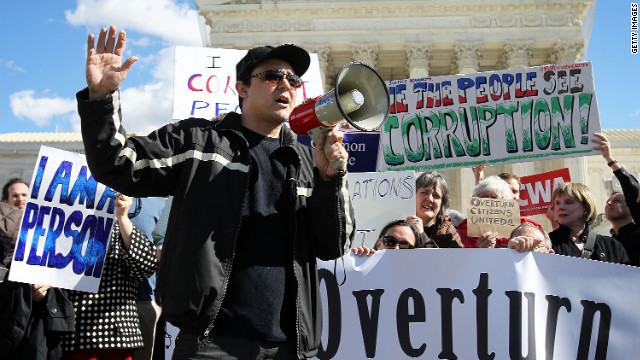 Activists rally in February 2012 to urge the Supreme Court to overturn its decision that fundamentally changed campaign finance law by allowing corporations and unions to contribute unlimited funds to political action committees not affiliated with a candidate.
Activists rally in February 2012 to urge the Supreme Court to overturn its decision that fundamentally changed campaign finance law by allowing corporations and unions to contribute unlimited funds to political action committees not affiliated with a candidate. 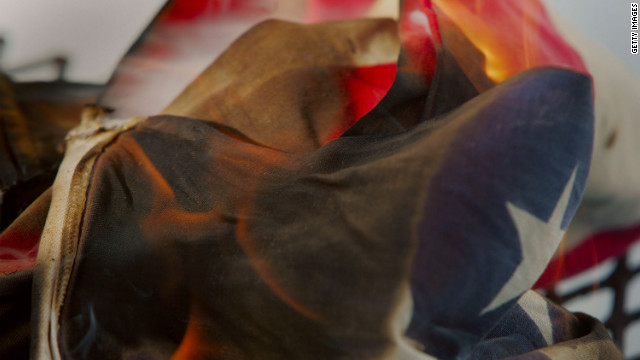 Gregory Lee Johnson lights a flag on fire to protest the Reagan administration and some Dallas-based corporations. Johnson was convicted of desecrating a venerated object but the court overturned the verdict on First Amendment grounds.
Gregory Lee Johnson lights a flag on fire to protest the Reagan administration and some Dallas-based corporations. Johnson was convicted of desecrating a venerated object but the court overturned the verdict on First Amendment grounds. 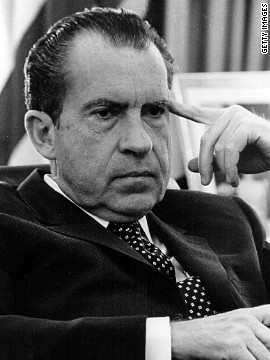 President Richard Nixon claimed executive privilege over taped conversations regarding the Watergate break-in in an attempt to keep the tapes out of a congressional investigation. The Supreme Court ruled that executive privilege is not ironclad.
President Richard Nixon claimed executive privilege over taped conversations regarding the Watergate break-in in an attempt to keep the tapes out of a congressional investigation. The Supreme Court ruled that executive privilege is not ironclad. 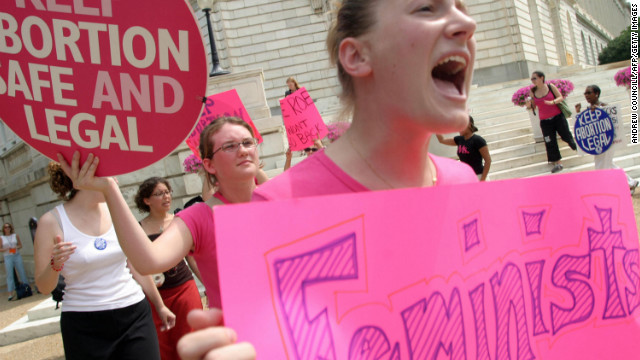 Wanda McCorvey, identified as "Jane Roe" sued the Dallas County, Texas, District Attorney Henry Wade over a law that made it a felony for her to have an abortion unless her life was in danger, citing her personal liberty. The court agreed with Roe and overruled any laws that made abortion illegal in the first trimester.
Wanda McCorvey, identified as "Jane Roe" sued the Dallas County, Texas, District Attorney Henry Wade over a law that made it a felony for her to have an abortion unless her life was in danger, citing her personal liberty. The court agreed with Roe and overruled any laws that made abortion illegal in the first trimester. 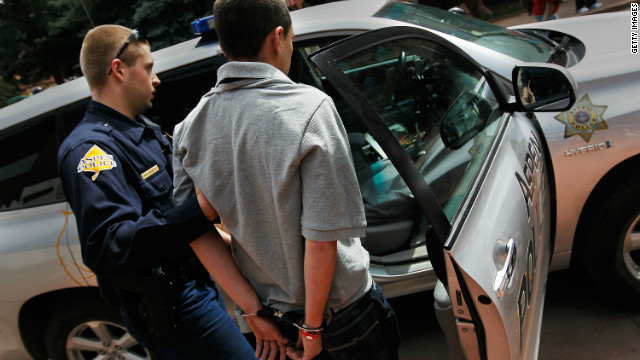 Ernesto Miranda confessed to a crime without the police informing him of his right to an attorney or right against self-incrimination. His attorney argued in court that the confession should have been inadmissible because police did not properly inform him of that right. The court agreed and the "Miranda Rights" got their name.
Ernesto Miranda confessed to a crime without the police informing him of his right to an attorney or right against self-incrimination. His attorney argued in court that the confession should have been inadmissible because police did not properly inform him of that right. The court agreed and the "Miranda Rights" got their name. 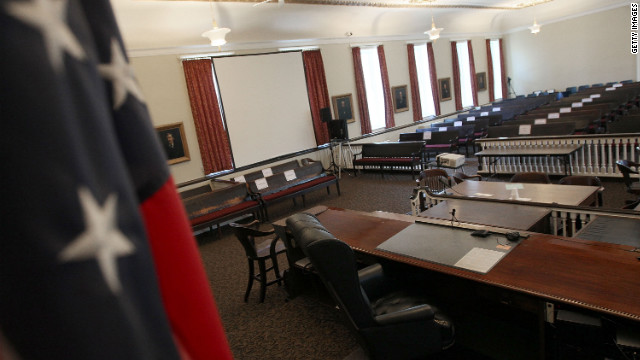 In 1961, Clarence Earl Gideon was convicted of burglary after he was denied the right to an attorney by a Florida court. Convinced that Constitution guaranteed him the right to an attorney, he wrote a note from his prison cell to the Supreme Court, which unanimously overturned the verdict.
In 1961, Clarence Earl Gideon was convicted of burglary after he was denied the right to an attorney by a Florida court. Convinced that Constitution guaranteed him the right to an attorney, he wrote a note from his prison cell to the Supreme Court, which unanimously overturned the verdict. 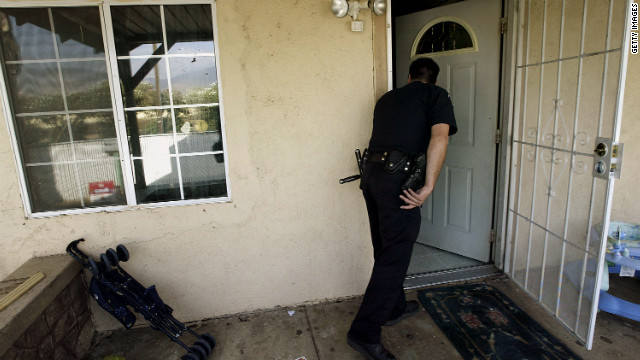 Dollree Mapp was arrested under an Ohio law for possession of obscene materials after police entered her home waving a piece of paper and calling it a warrant. The Court ruled that states could not violate the Fourth Amendment right to reasonable search and seizure, which rendered evidence gained that way inadmissible.
Dollree Mapp was arrested under an Ohio law for possession of obscene materials after police entered her home waving a piece of paper and calling it a warrant. The Court ruled that states could not violate the Fourth Amendment right to reasonable search and seizure, which rendered evidence gained that way inadmissible. 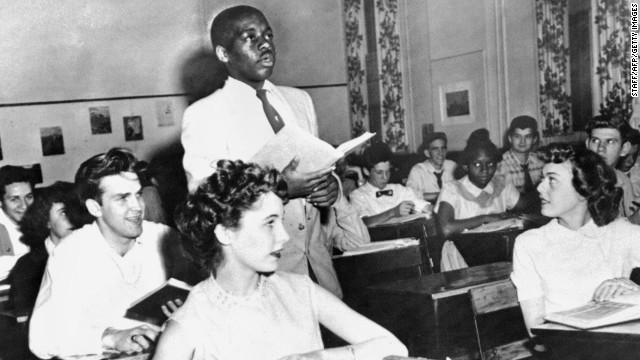 Nathaniel Steward, 17, recites his lesson surrounded by white classmates at the Saint-Dominique School, in Washington, the first school in which the Supreme Court ruling banning school segregation was applied.
Nathaniel Steward, 17, recites his lesson surrounded by white classmates at the Saint-Dominique School, in Washington, the first school in which the Supreme Court ruling banning school segregation was applied. 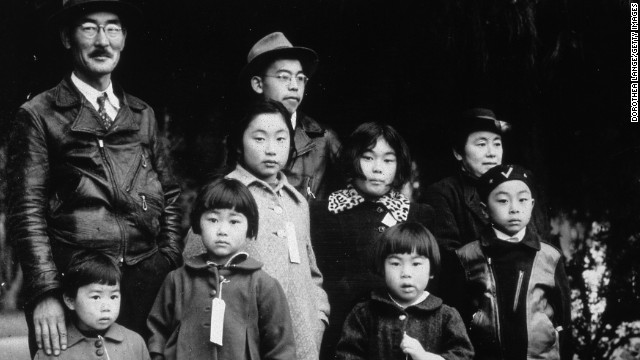 Fred Korematsu, a Japanese-American man, was arrested after authorities found out he claimed to be a Mexican-American to avoid being imprisoned in an interment camp during World War II. The court ruled that the rights of individuals were not as important as the need to protect the country during wartime.
Fred Korematsu, a Japanese-American man, was arrested after authorities found out he claimed to be a Mexican-American to avoid being imprisoned in an interment camp during World War II. The court ruled that the rights of individuals were not as important as the need to protect the country during wartime.  Homer Plessy, who was of mixed descent, said because he was 7/8 white and 1/8 black, he should be alowed to ride the whites-only car on a segregated railway in Louisiana. The court upheld a 1890 state statute requiring railway cars provide separate but equal accomodations.
Homer Plessy, who was of mixed descent, said because he was 7/8 white and 1/8 black, he should be alowed to ride the whites-only car on a segregated railway in Louisiana. The court upheld a 1890 state statute requiring railway cars provide separate but equal accomodations. 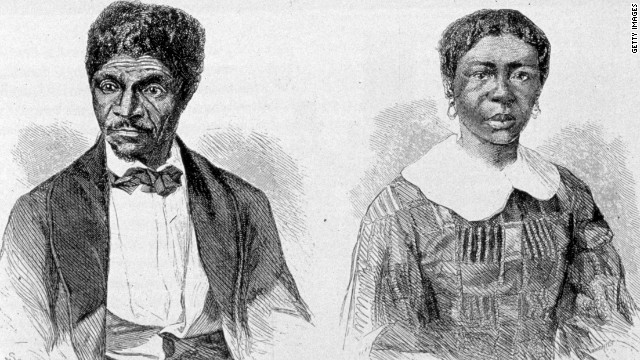 The front page of 'Frank Leslie's Illustrated Newspaper' reports the Dred Scott case, in which the court ruled that a slave could not gain his freedom by entering a state in which slavery was outlawed. The decision inflamed anti-slavery sentiment in the North.
The front page of 'Frank Leslie's Illustrated Newspaper' reports the Dred Scott case, in which the court ruled that a slave could not gain his freedom by entering a state in which slavery was outlawed. The decision inflamed anti-slavery sentiment in the North. 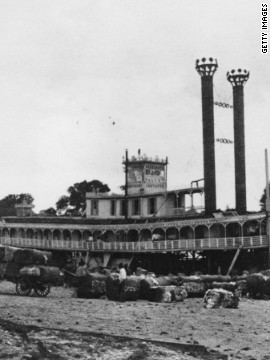 Gibbons v. Ogden was the first case to establish Congress' power to regulate interstate commerce. The ruling signaled a shift in power from the states to the federal government and was later used as part of the basis of the Civil Rights Act of 1964.
Gibbons v. Ogden was the first case to establish Congress' power to regulate interstate commerce. The ruling signaled a shift in power from the states to the federal government and was later used as part of the basis of the Civil Rights Act of 1964. 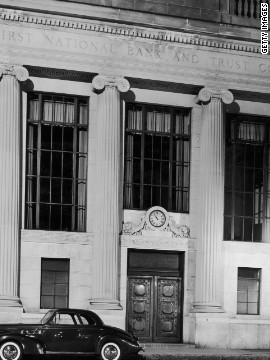 In response to the federal government's controversial decision to institute a national bank, Maryland tried to tax the bank out of business. A customer sued Maryland and the court ruled that the implied powers in the Constitution allowed the federal government to create a national bank and that national supremacy made Maryland's actions unconstitutional.
In response to the federal government's controversial decision to institute a national bank, Maryland tried to tax the bank out of business. A customer sued Maryland and the court ruled that the implied powers in the Constitution allowed the federal government to create a national bank and that national supremacy made Maryland's actions unconstitutional.  Outgoing President John Adams tried to appoint a number of Federalist loyalists to to judicial positions but some of the appointments had not been delivered by the time Thomas Jefferson took office. Jefferson instructed his Secretary of State James Madison (pictured) to stop delivery on the appoinments, including that of William Marbury, who sued. The court's ruling established the principal of judicial review -- the court's ability to rule on a law's constitutionality. Independent Business v. Sebelius (2012) Citizens United v. Election Commission (2010) Texas v. Johnson (1989) United States v. Nixon (1974) Roe v. Wade (1973) Miranda v. Arizona (1966) Gideon v. Wainwright (1963) Mapp v. Ohio (1961) Brown v. Board of Education (1954) Korematsu v. United States (1944) Plessy v. Ferguson (1896) Dred Scott v. Sanford (1857) Gibbons v. Ogden (1824) McColloch v. Maryland (1819) Marbury v. Madison (1803) HIDE CAPTION << <
Outgoing President John Adams tried to appoint a number of Federalist loyalists to to judicial positions but some of the appointments had not been delivered by the time Thomas Jefferson took office. Jefferson instructed his Secretary of State James Madison (pictured) to stop delivery on the appoinments, including that of William Marbury, who sued. The court's ruling established the principal of judicial review -- the court's ability to rule on a law's constitutionality. Independent Business v. Sebelius (2012) Citizens United v. Election Commission (2010) Texas v. Johnson (1989) United States v. Nixon (1974) Roe v. Wade (1973) Miranda v. Arizona (1966) Gideon v. Wainwright (1963) Mapp v. Ohio (1961) Brown v. Board of Education (1954) Korematsu v. United States (1944) Plessy v. Ferguson (1896) Dred Scott v. Sanford (1857) Gibbons v. Ogden (1824) McColloch v. Maryland (1819) Marbury v. Madison (1803) HIDE CAPTION << <
{ 0 comments... read them below or add one }
Post a Comment